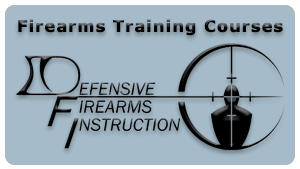Not Carrying With A Round In The Chamber
For a private citizen carrying a firearm for personal protection, that firearm exists for one purpose alone: protecting their life or the life of another from an imminent deadly threat.
That being said, in a defensive situation that is a fight for your life, it would be beneficial to be able to engage that deadly threat as fast as possible.
There are things that can be done to decrease the amount of time it takes to engage a deadly threat; one of those would be to carry with a round in the chamber.
We have already discussed how to properly carry with a round in the chamber.
Another consideration is what can potentially happen if we are not carrying with a round in the chamber.
The first thing to consider is that when confronted with a high-stress situation, people’s cognitive functions are typically reduced in excess of 50%.
This means that things that are usually easy become very difficult.
So adding steps that must be taken before a threat can be engaged is not always the best idea.
If I have to draw my firearm, disengage the safety and rack the slide before I can engage a deadly threat, this could slow me down and cause me to be less effective; which could, in turn, jeopardize my own health, welfare, and safety.
If I am carrying with a round in the chamber, all I would need to do to engage a deadly threat would be to draw and disengage the safety.
Another thing to consider is that during a high-stress situation there is a higher potential for short stroking the slide or riding the slide and inducing a malfunction on the firearm.
This situation would cost time, which could again jeopardize the health, welfare, and safety of everyone in the vicinity.
There is also an increased probability of a manual safety not getting fully disengaged or a malfunction not getting properly cleared.
The main focus for dealing with a deadly threat should be to effectively engage to stop the threat as fast as possible.
Any time steps can be alleviated to reduce the time it takes to engage a threat, it is advisable to do so.
One last aspect that should be considered is the possibility of having to engage a deadly threat in a close or confined space.
There is always a possibility that a threat could get close enough to physically engage you before you have the opportunity or the justification to engage with deadly force.
At this point, if a threat has you backed against a wall forcing you to engage using close quarter tactics, effectively racking the slide to get a round in the chamber may not only be difficult, it could potentially not be an option that could leave you without the ability to use a high enough level of force to stop the threat.
There is no legal obligation to carry with a round in the chamber; it is however highly recommended that you do.
If you are not comfortable carrying with a round in the chamber, it is recommended that you seek additional training until you become comfortable enough to carry with a round in the chamber as this method is going to allow the quickest ability to engage a deadly threat.



